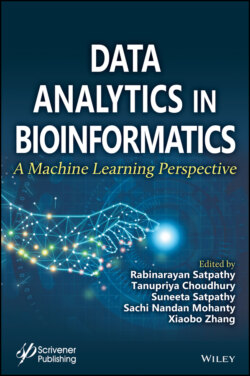Читать книгу Data Analytics in Bioinformatics - Группа авторов - Страница 16
1.2 Learning Process & its Methodologies
ОглавлениеIn AI, Learning means a process to train a machine in such a way so that the machine can take decisions instantly. Hence, the performance of that machine is upgraded because of its accuracy. When a machine performs in its working environment it may get either success or failure. From these successes or failures machines are gaining experience itself. These newly gained experience, improve the machines through their actions and forms an optimal policy for the working environment. This process is known as learning from experience. This process of learning is possible in an unknown working environment. A general block diagram learning architecture for such a method is presented below in Figure 1.3. This figure tries to present the mechanism of learning a new experience by a machine. The sequence of learning behavior in a stepwise manner is given below.
Step 1. The IoT based sensors received input from the environment.
Step 2. Then, the sensor sends these inputs to the critics for performance evaluation, according to the previously stored performance standards. Simultaneously, the sensor sends the same input to the performance element for checking its effectiveness, if found OK then immediately return the same to the environment through effectors.
Step 3. The Critics provide the feedback to the learning element, if any new feedback occurs then it should be updated in the performance of the element. Then, the updated knowledge comes back to the learning element and send it to the problem generator as a learning goal for evaluating the same through experiments. The updates are sent to the performance of the element for future reference.
Figure 1.3 Learning behavior of a machine.
The learning process of ML is done in three different ways. These are supervised learning, unsupervised learning, and reinforcement learning. These three learning types have their importance in the different fields of bioinformatics research. Hence, they are explained with suitable examples in the next sections.
